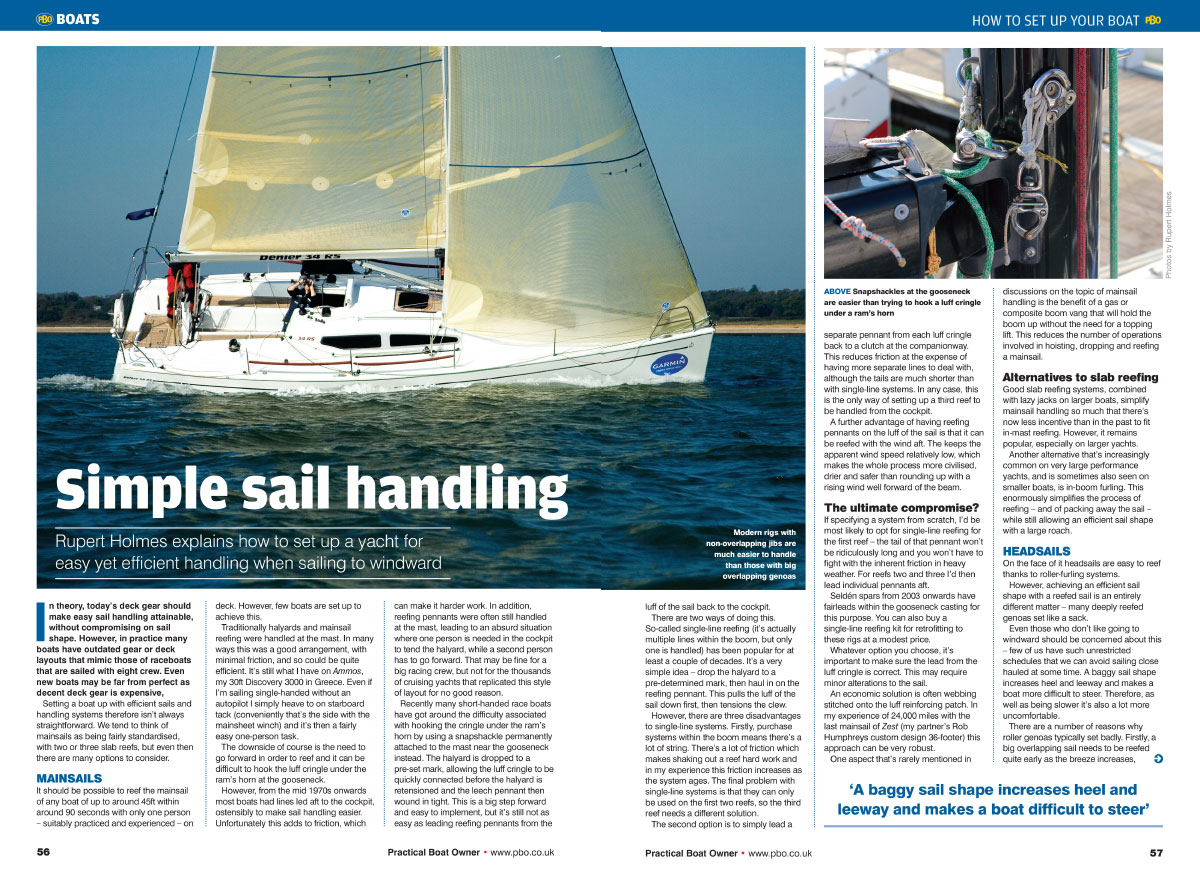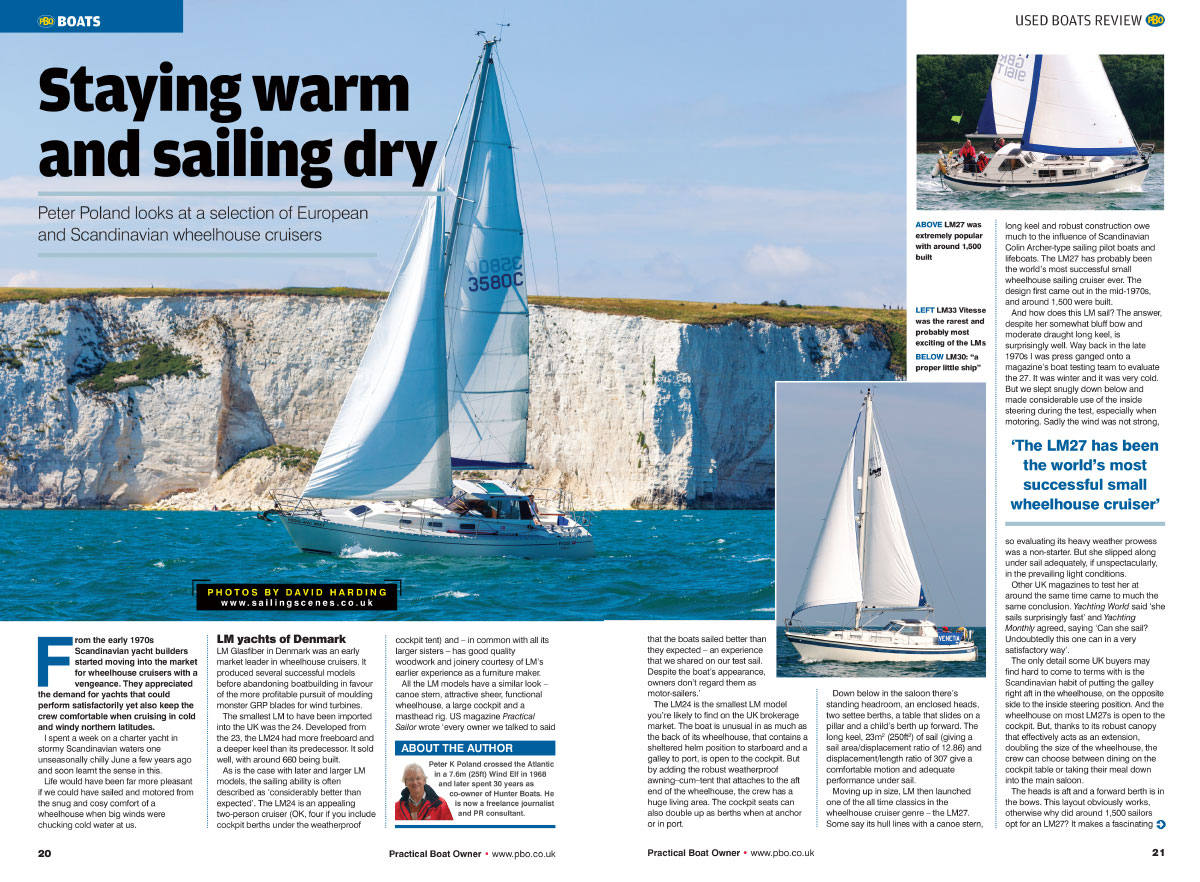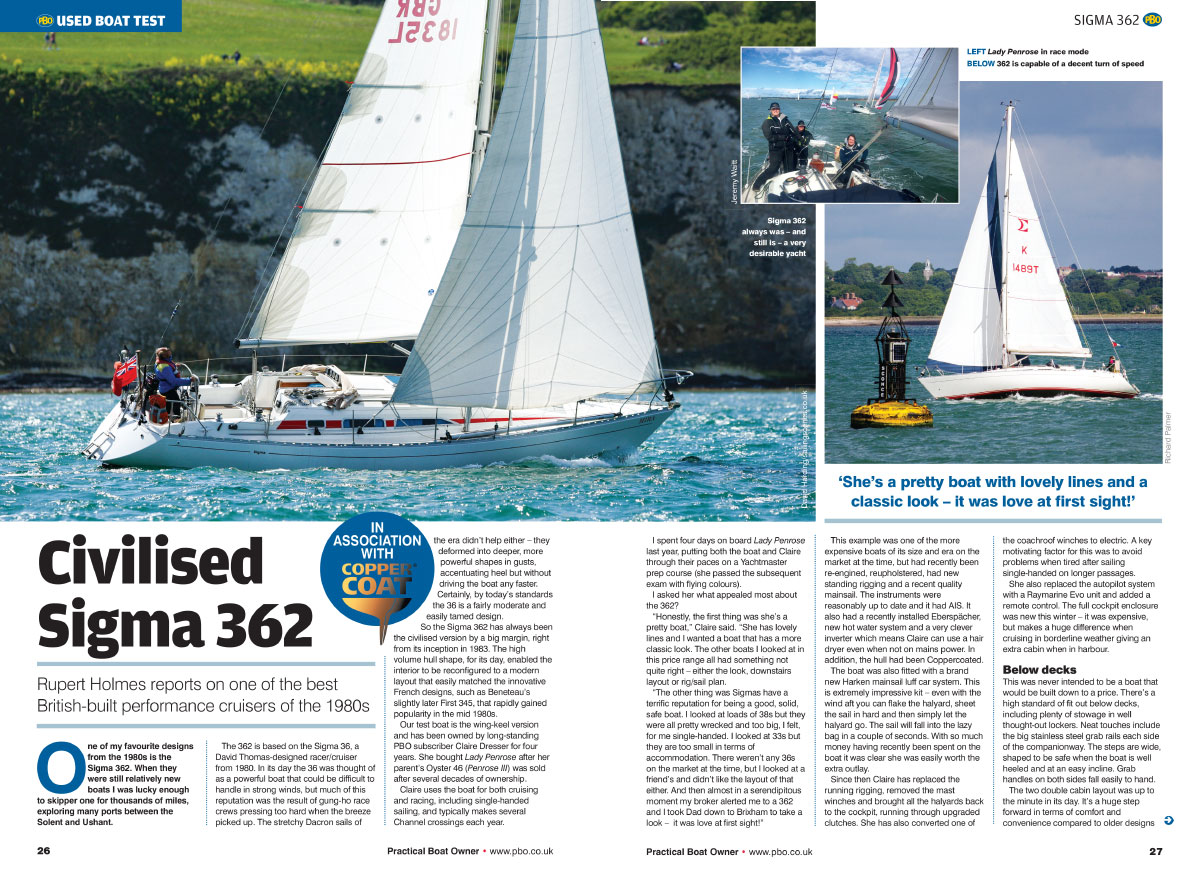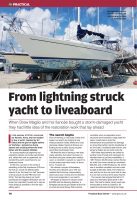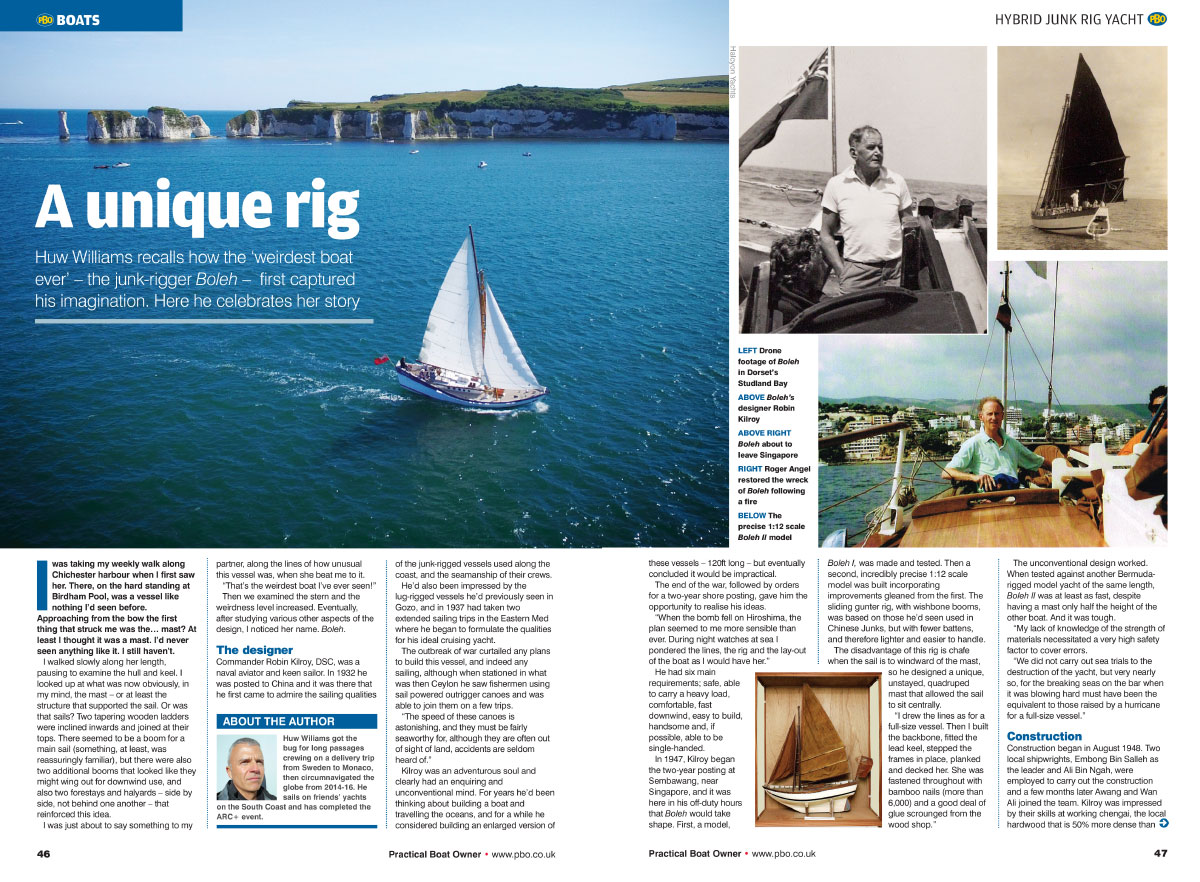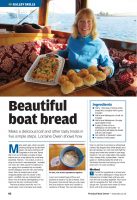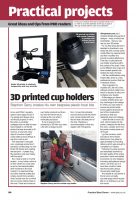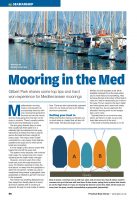
Pick up a copy of the May issue of PBO (on sale 19 March) and wrap your mind around this month’s tips on improving sail-handling via better efficiency on deck and updating your furlers and reefing systems. Plus there’s a trio of remarkable restorations: inspiring projects on extraordinary boats
To read a free preview of all the main articles below – just click on the image
Buy a single issue for delivery or subscribe now to get every issue delivered to your door: www.magazinesdirect.com
 Simple sail handling
Simple sail handling
How to set up a yacht for easy yet efficient handling sailing to windward
“In theory, today’s deck gear should make easy sail handling attainable, without compromising on sail shape. However, in practice many boats have outdated gear or deck layouts that mimic those of raceboats that are sailed with eight crew. Even new boats may be far from perfect as decent deck gear is expensive. Setting a boat up with efficient sails and handling systems therefore isn’t always straightforward. We tend to think of mainsails as being fairly standardised, with two or three slab reefs, but even then there are many options to consider.” Read more…
 Used boat review: Euro wheelhouse cruisers
Used boat review: Euro wheelhouse cruisers
Staying warm and dry in some of the best European and Scandinavian wheelhouse cruisers
“From the early 1970s Scandinavian yacht builders started moving into the market for wheelhouse cruisers with a vengeance. They appreciated the demand for yachts that could perform satisfactorily yet also keep the crew comfortable when cruising in cold and windy northern latitudes.
“I spent a week on a charter yacht in stormy Scandinavian waters one unseasonally chilly June a few years ago and soon learnt the sense in this. Life would have been far more pleasant if we could have sailed and motored from the snug and cosy comfort of a wheelhouse when big winds were chucking cold water at us.” Read more…
 Used boat test: Sigma 362
Used boat test: Sigma 362
Rupert Holmes sails one of the best performance cruisers of the 1980s
“One of my favourite designs from the 1980s is the Sigma 362. When they were still relatively new boats I was lucky enough to skipper one for thousands of miles, exploring many ports between the Solent and Ushant.
“The 362 is based on the Sigma 36, a David Thomas-designed racer/cruiser from 1980. In its day the 36 was thought of as a powerful boat that could be difficult to handle in strong winds, but much of this reputation was the result of gung-ho race crews pressing too hard when the breeze picked up. The stretchy Dacron sails of the era didn’t help either – they deformed into deeper, more powerful shapes in gusts, accentuating heel but without driving the boat any faster. Certainly, by today’s standards the 36 is a fairly moderate and easily tamed design.
“So the Sigma 362 has always been the civilised version by a big margin, right from its inception in 1983. The high volume hull shape, for its day, enabled the interior to be reconfigured to a modern layout that easily matched the innovative French designs, such as Beneteau’s slightly later First 345, that rapidly gained popularity in the mid 1980s.” Read more…
Remarkable restorations and practical ideas
 Spirit of Gaia: 62ft Wharram cat restored
Spirit of Gaia: 62ft Wharram cat restored
Restoration tips from the team who got a 63ft catamaran back on the water
“By the time Spirit of Gaia arrived in Greece in August 1998, she’d sailed some 32,000 miles around the world. It was one of the longest voyages made by a Wharram catamaran, and the longest by that particular design, a Pahi 63.
“The trip had taken its toll however and, although the boat didn’t suffer any structural failure during the entire voyage, there was the inevitable wear and tear of spending so much time at sea. The sails in particular were shot. A new set was ordered in 1999 – this time with sail covers – and for the next few years they cruised around the Ionian, usually accompanied by an inexhaustible supply of volunteer crew.
“This was followed by a five-year hiatus while James and Hanneke busied themselves with another project in the Pacific. For five years, Spirit of Gaia sat in Trizonia, an island in the Gulf of Corinth near Nafpaktos, gathering weed. When James and Hanneke eventually managed to refocus their attention on their beloved boat, it was clear she’d need a major overhaul to bring her back into shape.” Read more…
 Lightning struck sloop
Lightning struck sloop
How a yacht struck by lightning was refurbished as good as new
“In the summer of 2018 I convinced my fiancée, Avery, that we needed to buy a yacht. Inspired by SV Delos and the glut of digital sailors on YouTube, I pictured us living aboard and cruising where the wind blows and the season dictates.
“As young people just beginning our respective careers our funds were limited and, rather than rent an apartment, we decided the yacht would become our liveaboard home.
“At the time, we were in the midst of rebuilding a Sea Ray Sundancer 270 from the hull up, a boat we affectionately referred to as ‘the boat from hell’ because of its structural rot (see PBO Summer 2019).
“The Sea Ray being our fourth powerboat and biggest restoration yet, we knew how important it would be to view as many boats as possible to find the right sailing yacht.” Read more…
 Junk rig with a difference
Junk rig with a difference
Is the junk-rigged yacht Boleh the weirdest boat ever? Huw Williams celebrates her amazing story
“I was taking my weekly walk along Chichester harbour when I first saw her. There, on the hard standing at Birdham Pool, was a vessel like nothing I’d seen before. Approaching from the bow the first thing that struck me was the… mast? At least I thought it was a mast. I’d never seen anything like it. I still haven’t.
“I walked slowly along her length, pausing to examine the hull and keel. I looked up at what was now obviously, in my mind, the mast – or at least the structure that supported the sail. Or was that sails? Two tapering wooden ladders were inclined inwards and joined at their tops. There seemed to be a boom for a main sail (something, at least, was reassuringly familiar), but there were also two additional booms that looked like they might wing out for downwind use, and also two forestays and halyards – side by side, not behind one another – that reinforced this idea.
“I was just about to say something to my partner, along the lines of how unusual this vessel was, when she beat me to it. “That’s the weirdest boat I’ve ever seen!” Read more…
 How to bake boat bread
How to bake boat bread
How to bake bread, buns and pizza bases in a boat oven in five easy steps
“I’ve never been much of a baker but over the years I have found that you only need this one recipe to make any number of variations of bread. You can add wheat bran or oat bran to produce a wholemeal variant. My skipper likes white bread and I like wholemeal, so I mix bran with half the dough and make two loaves in one large bread tin. You can make plain rolls, seedy rolls, cheesy rolls, a pizza base – the list goes on. Nothing beats the smell of a full-blown bloomer loaf coming out of the boat oven, its crust crackling!” Read more…
 3D printed boat bits
3D printed boat bits
The bold new world of boat projects made on a 3D printer
“As an avid DIYer I regularly spend many happy hours in my garage and always have numerous projects in mind. But when a university colleague told me that his team had invested in a £160 3D printer that was accurate to 20 microns, it only took a few days to convince myself I could really produce things of use from such a unit.
“Two days later I’d bought one, a package arrived and I set about constructing my new Ender 3D printer and creating the test print – a plastic dog. My grandson was very happy with the result!
“So I made a start on my first project – a cup holder, which is an item driven by a real need as we’ve had several spilled drink incidents in the boat cockpit.” Read more…
Seamanship and real-life experience
 Mooring in the Med
Mooring in the Med
Top tips and hard won experience for Mediterranean moorings
“Mediterranean mooring means mooring stern-to (occasionally bows-to) with one mooring line going from the bow out into the marina and two lines going from the stern to the quay or pontoon. There’s usually another boat to port and starboard of yours.
“The line going forward (lazy or slime line) usually has three parts to it: a relatively light line attached to the quay, followed by a heavier line that is used to secure the boat and then a length of heavy chain. The heavy chain is itself connected to a very heavy chain that lies parallel to the quay and to which all the boats are connected.
“It is the weight of the various chains that keeps the boat off the quay wall.
“The system works because, with minimal tidal range, the various lines don’t need adjusting…” Read more
 River Crouch navigation
River Crouch navigation
Sailing 19 miles inland on the longest river in Essex
“Summer had truly arrived and so too had the east wind. We’d been dealt three weeks of it: north-east, south-east, east and anything coming from that way in between.
“I’d boarded the night before with the weekend’s target destination North Fambridge area in the upper reaches of the River Crouch, the longest of the Essex rivers penetrating 19 miles inland to a visiting yacht’s navigable limit at Battlesbridge. And with that east wind and me being a cruising man there could be anything else on our journey in between.” Read more…
 Canada’s Thousand Islands
Canada’s Thousand Islands
Lazy days and beautiful places to visit on Lake Ontario, the ‘lake of shining waters’
“Lake Ontario is the smallest of the Great Lakes and is fed by the Niagara River on the south-west shore of the lake. To the north-east it empties into the St Lawrence River; at this point and straddling the Canadian/US border are the ‘Thousand Islands’.
“Despite the name there are actually more than 1,800 islands which form an archipelago in the wide expanse of the St Lawrence. They are a popular destination for Canadian boaters and reported to be very beautiful, so we were keen to visit.” Read more…
 Atlantic crossing: To paradise and back
Atlantic crossing: To paradise and back
An Atlantic crossing in their home-built yacht leads a couple to discover paradise in the Caribbean
“I grew up in Romania, far from the Black Sea coast, and when I moved to Denmark I didn’t know a single thing about sailing. I couldn’t even swim.
“My passion for sailing and the wish for a real ocean voyage came gradually. My husband, Mikael, built us a boat in our back yard – a six-ton LM32 motor-sailer called Blue Dane – and we have been sailing her for the last 20 years.” Read more…




